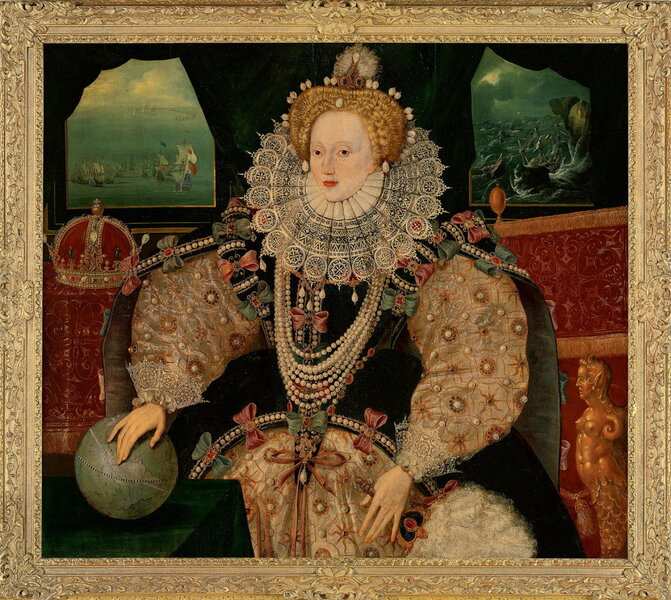How the British public saved (a portrait of) the queen
Loading...
A nationwide fundraising campaign has succeeded in saving an iconic part of British art and history from being sold on the open market.
The Art Fund, a national fundraising group, announced Friday that the campaign had secured the funding to buy a renowned Armada portrait of Queen Elizabeth I, circa 1590, that its owner, a descendant of 16th century British Naval officer Sir Francis Drake, planned to sell.
The success was a “triumph of popular will,” said Art Fund director, Stephen Deuchar, as quoted in The Guardian.
Saving the painting was a collaborative effort: More than 8,000 donations from the public, totaling £1.5 million ($1.9 million), were contributed since May and matched by a consortium. The Royal Museums Greenwich, where the portrait will hang, donated £400,000 ($528,000), more than its entire acquisitions annual budget to the cause, and the final piece – a grant of £7.4 million ($9.7 million) from a national lotto game – put the fund over the £10 million ($13.1 million) needed, The Guardian reports.
Fundraising Britishers got creative while they were at it: 7-year-old Christina Ryder, for example, raised money by selling 400 cupcakes that she decorated with pictures of an Armada-esque Elizabeth I, fundraisers said.
The portrait itself depicts Queen Elizabeth I, a stalwart of British royal history, after the British triumph over the Spanish Armada in 1588. The sea battle was a major victory for the island nation and their global ambitions, and it remains an important point of British history. The painting depicts Queen Elizabeth I with her hand resting casually (and symbolically) on the globe, regaled in pearls, bows, and the usual finery fit for a queen.
“The painting captured the national imagination in 2016 as surely as the defeat of the Armada itself had done in 1588,” the Art Fund's Mr. Deuchar said.
The fundraising didn't just save the painting from potentially being sold outside the country, it brought it out of a privately owned collection and into permanent public view. Deuchar alluded to this in his comments praising the “irresistible momentum that has brought this great work into public ownership at last.”
Though it had been part of temporary exhibits from time to time, the painting usually occupied a place over the mantle in the Buckinghamshire country house Shardeloes, built in the late 18th century for a Drake descendant.
In its new arrangement, the Armada portrait will be accessible to many more people, some of whom may have had a hand in securing its purchase.
The Royal Museums Greenwich will install the painting for public viewing in a museum property called the Queen’s House. A spokeswoman for the Art Fund told The New York Times in an email that and the excess funds raised will be put toward “vital conservation and an extensive national program to engage audiences around the country with the painting.”







